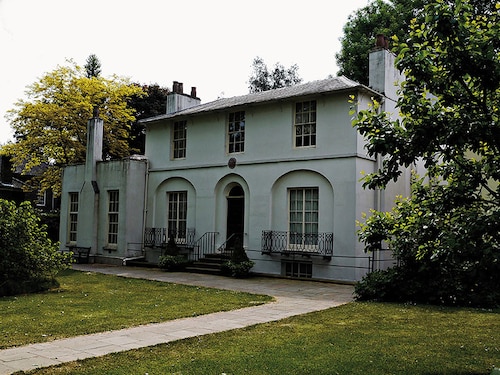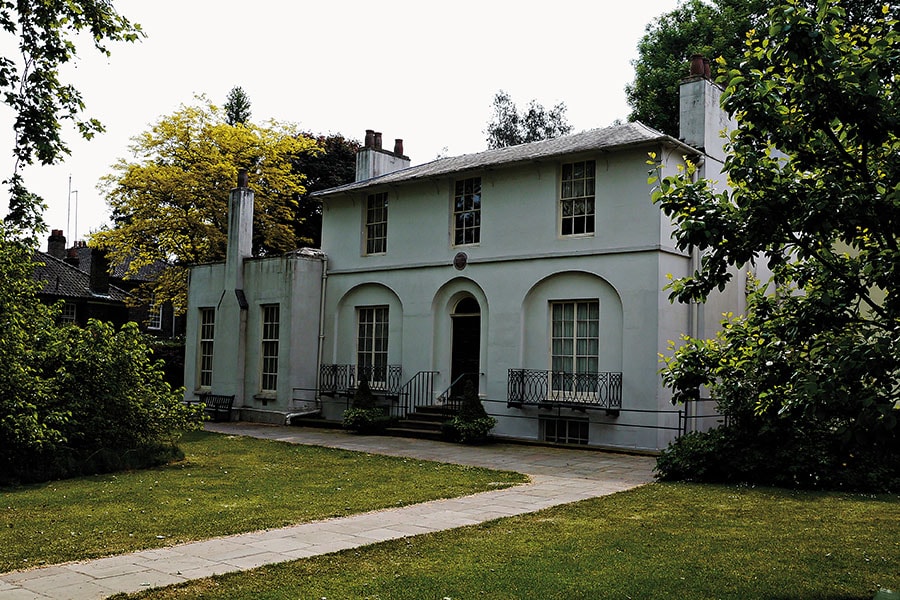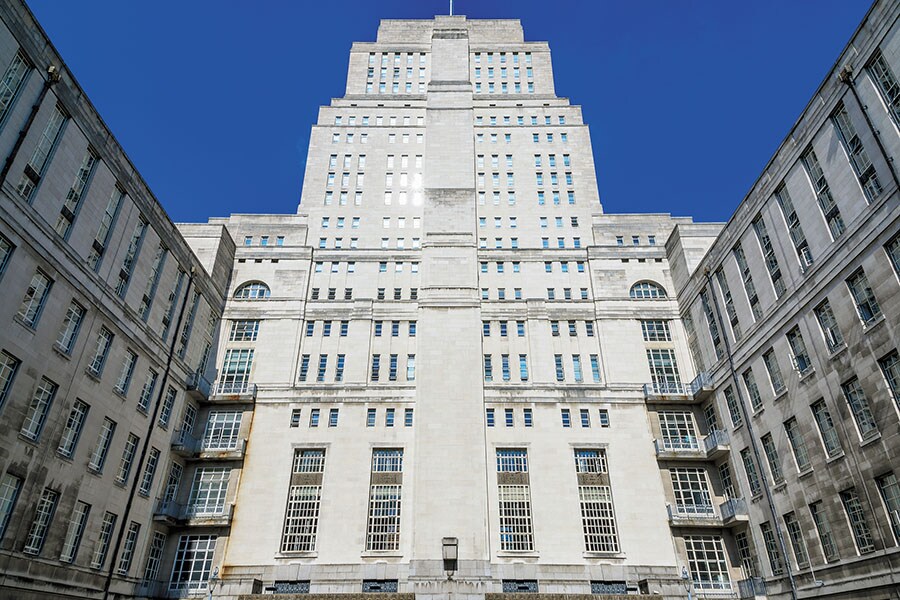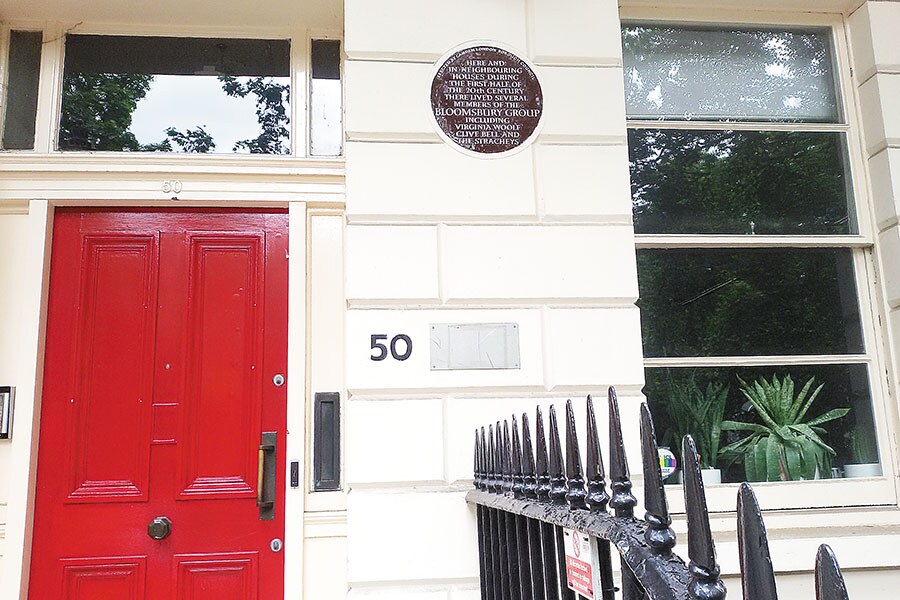Tale of two neighbourhoods: These London localities were home to literary greats
Tread the cobblestones of the London streets where literary giants once roamed


 Keats House, where poet John Keats lived briefly, has now been turned into a museum
Keats House, where poet John Keats lived briefly, has now been turned into a museum
Image: Victoria Allum/Shutterstock
By 1800, London was one of the world’s biggest cities with almost 1 million inhabitants, and, a century later, had six times that number of people crowded into its dark alleyways, cramped tenements and soot-filled factories. Eminent Victorians prowled the streets of Dickensian London, alongside modernists and bohemians. Artists, writers and intellectuals could be found hobnobbing in literary salons and gatherings wherever there was a willing host. They sought to live near each other in the hope of exchanging ideas, being invited to elite soirees, or even falling in love.
On a recent visit, therefore, I decided to avoid the tired old trails and explore something closer to my own chosen career as a writer of fiction. And what better way to get a sense of where its literary titans lived than by treading the cobblestones of the streets where they lived? Most of these houses are now expensive, updated residences that are currently lived in, which is why it is only possible to view them from the outside. But a few, like Keats House and The Charles Dickens Museum, can be explored for the price of an entry ticket.
Determined to adventure through this undiscovered aspect of the city, I decide to focus on what the Bloomsbury Group once called home and the affluent village of Hampstead, both in the borough of Camden, in the north of London. 
No 77 Parliament Hill, where George Orwell lived Bloomsbury can feel a little daunting, because of its network of streets and the density of heritage blue plaques marking landmarks. The neighbourhood derives its name—‘Blemund’s Bury’ or ‘House of Blemund’—from its 13th-century landowner William de Blemund. It was only in the 17th and 18th centuries, when this farmland belonged to the earls and dukes of Bedford, that it was developed. Most of it now belongs to the University of London, which leases out properties to others or uses them as university buildings.
Our tour guide, Andy, leads us off the noisy High Holborn street into the pin-drop silence of Red Lion Square where, at the turn of the 18th century, the police could not arrest people on Sundays for not repaying their debt. Consequently, a particular poverty-stricken young poet would be smuggled into Red Lion Square on Sundays by friends, so that he could meet his girlfriend there. This was the only way in which Romantic poet Percy Bysshe Shelley could get out of the house, without being arrested for the money he owed people. His girlfriend, and later wife, was Mary Godwin, who wrote Frankenstein when she was only 19.
Five minutes later, we are at 23-24 Great James Street, the home of crime writer Dorothy L Sayers, who, along with Agatha Christie, was one of Britain’s greatest detective fiction writers. She worked in advertising and the phrase ‘It pays to advertise’ is attributed to her.
We walk past Rugby Tavern and seconds later, find ourselves on Rugby Street, where Andy leads us to No 18, an address made famous by the Poet Laureate Ted Hughes in his final collection, Birthday Letters.
So there in Number Eighteen Rugby Street’s Victorian torpor and squalor I waited for you.
I think of that house as a stage-set -
Four floors exposed to the auditorium.
Hughes had just married the American poet Sylvia Plath on June 16, 1956, at the Church of St George the Martyr nearby, and they spent the first night of their honeymoon in a friend’s flat on Rugby Street. There was nothing remarkable about it, and at the time neither poet had any clue what the future held: Certainly not that one of them would become the Poet Laureate of Britain and the other would end her life in a cold flat in Primrose Hill, just as her poetry was gaining world recognition.
Down Great Ormond Street and across Queen Square, the church where the two had been wed is surprisingly tiny inside, although its façade wraps around the street corner, bedecked with angels looking into the square and a prominent grey spire piercing through the tree tops. In this cool and shaded interior, Hughes and Plath had exchanged vows, with only her mother and a handful of others in attendance on a day that’s also known as Bloomsday. The couple specifically chose that day, named after James Joyce’s most famous protagonist, Leopold Bloom, from his novel Ulysses the story in the novel takes place on June 16, 1904.
At the corner of Russell Square (yes, the same one mentioned in William Thackeray’s Vanity Fair), Andy points out the top half of London University’s imposing Senate House. This concrete skyscraper is where novelists Graham Greene, Evelyn Waugh and George Orwell once worked as part of the Ministry of Information, writing propaganda for films and publication during the Second World War. Orwell based the ‘Ministry of Truth’ of his novel 1984 on this impressive Art Deco building.
According to Andy, there are two theories about why Senate House remains standing while almost every street around it was bombed during World War II. Lowering his voice, with a flair for the dramatic, he says: “There was a rumour that Hitler wanted Senate House for his own headquarters, once he had conquered London. The other theory is that the Luftwaffe used Senate House as a landmark once they spotted the skyscraper, they knew where to drop their bombs.”
We walk to the corner of Russell Square and Thornhaugh Street, where there’s a building with an orange frontage. It housed the old offices of Faber & Faber publishing house, where Nobel Prize winner TS Eliot was editor for most of his career. The building itself was hit in June 1944 during the Second World War, but it survived.  The Senate House
The Senate House
Image: Wei Huang/Shutterstock
From here, I part ways with Andy, and follow the path past Woburn Square that eventually opens onto Gordon Square. This is one of the most literary spots in London, being the home of the notorious ‘Bloomsbury Group’, who, American writer and poet Dorothy Parker once quipped, ‘…lived in squares, painted in circles, and loved in triangles’. This quiet rectangle of dull-brown, Georgian-style structures once housed the core members of what came to be known as the Bloomsbury Group, a snobbish clique including novelist Virginia Woolf, her sister artist Vanessa Bell, biographer Lytton Strachey, poet TS Eliot, economist John Maynard Keynes and a few others. No 46 Gordon Square, in particular, is where Woolf and Bell grew up, and where Keynes lived, later, for 30 years.
I wander into the Gordon Square gardens and sit on a bench, trying to imagine the views Woolf must have had from her upper storey window over the tops of plane trees and copper beeches. Within moments, I feel like I am in the centre of an oasis of calm. It is hard to imagine that only a few streets away are the busiest areas of London, with their hustle of the daily grind, not to mention the summer tourists.
I stroll towards a busy corner of Tavistock Square and locate the huge, bright red, brick building of the British Medical Association, designed by Sir Edward Lutyens, the same architect of Lutyens-Delhi fame. I try to find Charles Dickens’ last residence in London, before he moved out to Gad’s Hill in Kent. I spot it, across the road, through a break in the traffic. It is from here that he wandered out in the dead of night, walking the London streets during intense bouts of insomnia. Some speculate that this was due to his affair with 18-year-old Ellen Ternan, for whom he wanted to leave Catherine, his wife of 20 years.
On another day, I take the tube to Russell Square station and follow the signs to the only London address of Dickens that is still standing, and has been converted into a museum. Seeing a large group of Korean students, I hasten to beat them to the front of the line, anticipating the small entryways and rooms inside typical London houses.
Surprisingly, though, the small sea-green front door of No 48 Doughty Street disguises a rather large labyrinth of hallways and rooms, spread across three floors, where Dickens lived with his family, holding dinners with authors, playwrights and critics, and conducting literary salons where he read his work from a specially designed lectern. Not only was I in the house where Dickens penned The Pickwick Papers, Oliver Twist and Nicholas Nickleby, I was staring at the very desk where they were written.  A house in Gordon Square bears the plaque of the Bloomsbury Group Unlike Bloomsbury, Hampstead has a provincial, though affluent, charm. It helps that Hampstead Heath, the lungs of Camden, makes up half of the village. Walking around, you’ll see its mostly Victorian architecture, from when it began to be developed in the late 19th and early 20th centuries.
A house in Gordon Square bears the plaque of the Bloomsbury Group Unlike Bloomsbury, Hampstead has a provincial, though affluent, charm. It helps that Hampstead Heath, the lungs of Camden, makes up half of the village. Walking around, you’ll see its mostly Victorian architecture, from when it began to be developed in the late 19th and early 20th centuries.
According to Bernard Crick’s George Orwell: A Life, the author of Animal Farm and 1984 occupied a room in Flat 3, on the top floor of Warwick Mansions, 37 Pond Street. Before joining the Ministry of Information, Orwell had a job at Booklovers’ Corner—a second-hand bookshop—which included rent-free accommodation above the shop. While living here for a year in 1934, he wrote Keep the Aspidistra Flying, a book riddled with his impressions of middle-class Hampstead.
Since those days, Hampstead has evolved into an affluent and residential neighbourhood, albeit still managing to preserve its original village texture.
From the Hampstead Heath rail station, I walk up to the very end of Parliament Hill road, where it meets Hampstead Heath. No 77, the grand Victorian red-brick house, is where Orwell next rented a room, after friends thought he needed to be closer to the Heath for his weak lungs.
Back at the station, I walk straight down South End road, past a crescent row of shops and tea-rooms and follow the signpost to the Regency-style Keats House, down Keats Grove, now a museum. This is where John Keats lived briefly to explore life as a poet after leaving a promising career in medicine. Keats’ friend, poet and critic Charles Brown, owned one section of this house, and rented out a parlour and a bedroom to Keats.
Though he only lived here from 1818 to 1820, this was where Keats wrote most of the work he’s famous for, including Ode to a Nightingale and Ode to a Grecian Urn. Not long after he moved in, he fell in love with and proposed to 18-year-old Fanny Brawne, the daughter of the family who had rented out another part of the same house. The two lovers corresponded through letters, even though only a wall separated them. On the top floor of the museum there’s her purple stone and gold engagement ring.
Making my way through the museum, it’s hard not to feel drawn into the tragic circumstances of Keats’ premature death from tuberculosis while he was in Rome, aged only 25. Because his poetry gained fame posthumously, he died believing that he had failed in his ambition to be a great poet.
I walk back to South End road and follow the edge of the Heath until I come to the Vale of Health. What is now an exclusive residential area was once a malarial swamp. It was drained by the Hampstead Water Company in the 1770s and re-named in a bid to attract property buyers.
On entering a hamlet of villas surrounded almost entirely by woods, I search for No 3 Villas-on-the-Heath, the residence of Bengali poet Rabindranath Tagore when he visited London in 1912, the year before he was awarded the Nobel Prize. And just around the bend is No 1 Byron Villas, where DH Lawrence lived with his wife briefly in 1915. EM Forster, Aldous Huxley, Bertrand Russell, WB Yeats, Ezra Pound and Katherine Mansfield all visited the Lawrences here, making the Vale of Heath, at one time, the most literary spot in Hampstead.
I realise that on previous visits to London, I had never ventured beyond Shakespeare’s Globe Theatre and the British Library. Sure, I’d spotted the occasional blue plaque or statue dedicated to some writer or the other. But actively exploring this side of the city, discovering blue plaques of Nobel Laureates, locating the addresses that formed the backdrop to award-winning stories and poems and uncovering a deeper layer to London’s attractions is an entirely different experience. And a deeply satisfying one.
First Published: Sep 02, 2018, 07:05
Subscribe Now